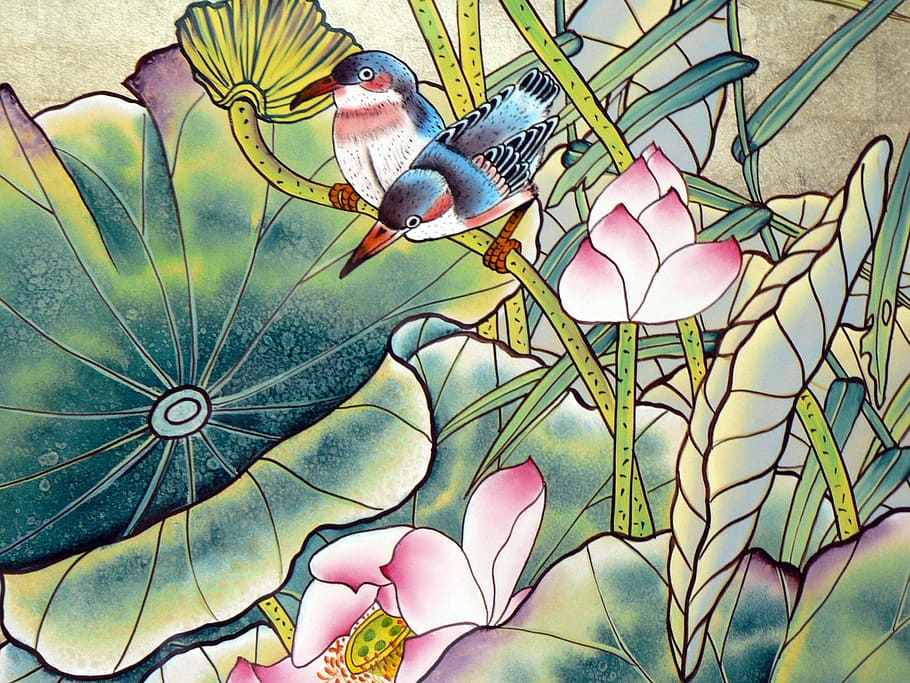Silk art is a mesmerizing fusion of luxury and creativity. From the delicate threads that weave together intricate designs to the vibrant colors that burst forth on fabric, this artistic medium has captured hearts for centuries. The allure of silk transcends mere aesthetics; it tells stories, preserves traditions, and evokes emotions. As we journey through the rich history of silk art, you’ll discover how ancient practices have evolved into modern masterpieces that continue to inspire artists today. Whether you’re an admirer or a budding creator, there’s something enchanting about silk art waiting to be explored. Let’s unravel its beauty together!
The history and origins of silk art
Silk art traces its origins back thousands of years, rooted in ancient China. The discovery of silk production is often credited to the legendary Empress Leizu around 2700 BC. This innovation changed not just textiles but also cultural expressions.
As trade routes expanded, especially through the Silk Road, silk reached various cultures. Its luminous quality caught the eye of artisans across Asia and beyond, leading to unique interpretations in their artwork.
In Japan, traditional silk painting known as “Nihon Mingei” emerged during the Edo period. Artists skillfully created intricate designs that reflected nature and folklore.
Meanwhile, in India, rich colors and patterns flourished with techniques like tie-dyeing and block printing on silk fabric. Each region developed distinct styles that showcased local traditions while celebrating this luxurious medium’s versatility.
The allure of silk has endured over centuries; it remains a cherished canvas for artistic expression worldwide.
The significance of silk as a medium for art
Silk has long been revered for its luxurious texture and vibrant colors. This exquisite fabric offers artists a unique canvas, allowing their creativity to flourish in ways that other materials cannot.
The smooth surface of silk enhances the depth and richness of dyes, making every artwork come alive. Artists often find themselves captivated by the way light interacts with this fine material, creating stunning visual effects.
Moreover, silk is lightweight yet durable. Its flexibility allows for intricate designs and detailed patterns that showcase an artist’s skill. The natural sheen adds an element of elegance to each piece.
Using silk as a medium also connects modern creators with centuries-old traditions. Ancient cultures recognized its beauty and used it to express stories through art. Today’s artists continue this legacy while exploring new techniques and styles that celebrate the timeless allure of silk.
Different techniques and styles used in silk art
Silk art boasts a variety of techniques that highlight its versatility. One popular method is silk painting, where artists use dyes to create vibrant images directly on the fabric. This technique allows for intricate designs and stunning color blends.
Another captivating approach is silk embroidery. Here, threads are stitched into the silk surface to create textured patterns or detailed scenes. The result can be both delicate and striking.
Shibori, a Japanese tie-dye technique, offers unique patterns through folding and binding the fabric before dyeing it. Each piece becomes one-of-a-kind with unpredictable yet beautiful results.
Additionally, batik involves applying wax to sections of silk before dyeing, creating exquisite contrasts between colors.
These diverse styles contribute to the rich tapestry of silk art, showcasing endless possibilities for creativity and self-expression within this elegant medium.
Famous examples of silk art throughout history
Silk art has a rich tapestry woven through history, showcasing cultural narratives across civilizations. One standout example is the exquisite silk tapestries of the Tang Dynasty in China. These monumental pieces depicted vibrant landscapes and intricate scenes, demonstrating remarkable craftsmanship.
In Japan, kimono fabric illustrates a deep appreciation for nature. The dramatic patterns often incorporate seasonal motifs, capturing fleeting beauty in each thread.
Meanwhile, Persia’s lavish silk carpets are renowned for their detail and storytelling prowess. Each rug tells tales of ancient myths and traditions through its elaborate designs.
The modern world also recognizes remarkable artists like Aiko Miyanaga, who blends traditional techniques with contemporary themes to create striking silk paintings that challenge perceptions.
These examples not only celebrate skill but also preserve the stories and aesthetics of cultures long past. Silk art continues to inspire awe today with its enduring elegance and complexity.
Modern-day revival of silk art and its popularity
Silk art is experiencing a vibrant resurgence in today’s creative landscape. Artists are drawn to its unique texture and luminous quality, allowing for endless possibilities.
Social media platforms showcase stunning silk paintings and scarves, inspiring new generations. Tutorials on YouTube and Instagram help enthusiasts learn the craft from home.
Sustainability also plays a role in this revival. Many artisans prioritize eco-friendly practices, sourcing materials responsibly. Consumers increasingly seek handmade items that promote ethical artistry.
Art fairs and exhibitions dedicated to silk art are gaining traction worldwide. Local communities celebrate workshops where participants can create their own pieces under expert guidance.
The fusion of traditional methods with contemporary designs captivates audiences far and wide. This blend breathes fresh life into an ancient craft while appealing to modern tastes. As silk continues to weave its way into popular culture, it invites everyone to discover its beauty anew.
How to create your own silk art masterpiece
Creating your own silk art masterpiece is an exciting journey. Start by gathering the right materials. You’ll need silk fabric, dyes, and tools like brushes or a resist applicator.
Next, sketch your design on paper. This step helps visualize the composition and colors you want to use. Once you’re confident in your idea, transfer it gently onto the silk using a pencil or washable marker.
Now it’s time for dyeing! Apply resist where you don’t want color to bleed, then paint with vibrant dyes. Be playful; blending colors can create stunning effects.
After you’ve finished dyeing, let your artwork dry completely before setting the dyes according to product instructions. Iron it carefully for a polished finish.
Hang your piece proudly or gift it as a unique treasure! The joy of creating silk art lies in experimentation—embrace every brushstroke along the way.
Conclusion: Why silk art is a unique and beautiful form of expression
Silk art stands out as a unique and beautiful form of expression. It weaves together history, culture, and creativity in ways that few other mediums can match. The luxurious texture of silk adds an unparalleled depth to each piece, drawing viewers into the intricate designs and vibrant colors.
The significance of silk goes beyond its aesthetic appeal; it embodies centuries of craftsmanship and tradition. From ancient practices to modern interpretations, artists have embraced this medium for its versatility and elegance.
Creating your own silk art allows you to tap into this rich heritage while expressing your personal style. Whether you’re painting on silk or exploring textile arts like dyeing or embroidery, every stroke is a chance to connect with the past while adding your voice to the ongoing narrative of silk art.
As interest grows in sustainable practices and handcrafted goods, more people are rediscovering the joy of working with silk. This revival speaks volumes about our collective desire for authenticity in an increasingly digital world.
In essence, engaging with silk art offers a rewarding experience that transcends simple aesthetics. It invites both artists and admirers alike to appreciate beauty through meticulous craftsmanship while celebrating cultural diversity—all woven together by one remarkable fabric: silk.


